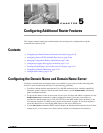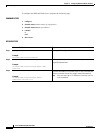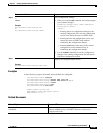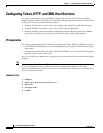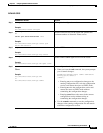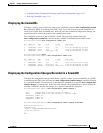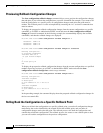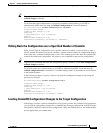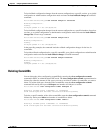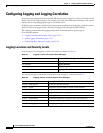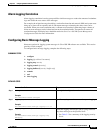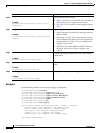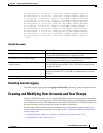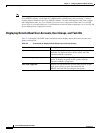
5-105
Cisco IOS XR Getting Started Guide
OL-14361-01
Chapter 5 Configuring Additional Router Features
Configuring the Domain Name and Domain Name Server
Examples
In the following example, the domain name and DNS are configured:
RP/0/RP0/CPU0:router# configure
RP/0/RP0/CPU0:router(config)# domain name cisco.com
RP/0/RP0/CPU0:router(config)# domain name-server 10.1.1.1
RP/0/RP0/CPU0:router(config)# commit
RP/0/RP0/CPU0:router(config)# end
RP/0/RP0/CPU0:router# show hosts
Default domain is cisco.com
Name/address lookup uses domain service
Name servers: 10.1.1.1
Related Documents
Step 4
end
or
commit
Example:
RP/0/RP0/CPU0:router(config)# end
or
RP/0/RP0/CPU0:router(config)# commit
Saves configuration changes.
• When you issue the end command, the system prompts
you to commit changes:
Uncommitted changes found, commit them before
exiting(yes/no/cancel)?
[cancel]:
–
Entering yes saves configuration changes to the
running configuration file, exits the configuration
session, and returns the router to EXEC mode.
–
Entering no exits the configuration session and
returns the router to EXEC mode without
committing the configuration changes.
–
Entering cancel leaves the router in the current
configuration session without exiting or
committing the configuration changes.
• Use the commit command to save the configuration
changes to the running configuration file and remain
within the configuration session.
Step 5
show hosts
Example:
RP/0/RP0/CPU0:router(config)# show hosts
Displays all configured name servers.
Command or Action Purpose
Related Topic Document Title
Complete descriptions of the domain services
commands
Implementing Host Services and Applications on Cisco IOS XR
Software module in Cisco IOS XR IP Addresses and Services
Configuration Guide



